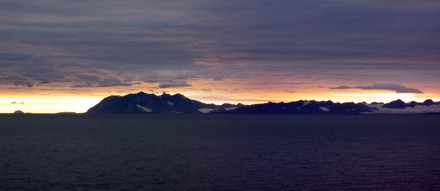Weather and light
Weather
Arctic weather is unstable and dependent on the terrain. Although it seems to be raining really frequently, there is very low precipitation over the year (less then 500 mm). Everpresent wetness is the result of insufficient vaporization and the fact that water does not soak into permafrost.
Fogs and mainly wind are frequent. On average 28% of days within a year the wind blows as strong as grade 6 of Beaufort's scale or stronger.
On temperature the measurements from LYB airport throughout the period 1976-1996 say
the following:
Average: -6.7°C (year), 5.9°C (July), -16.2°C (February)
Absolute extremes: 21.3°C (July), -46.3°C (March)
Tha variance of temperature between day and night is not very significant for great part
of the year, due to polar day or polar night.
Light and darkness
Svalbard is far beyond Arctic Circle, so the phenomenon of polar day and night is quite distinct. At Longyearbyen's 78th parallel, the mignight sun period lasts from 21st April to 21st August and polar night from 28th October to 11th February.
Polar night is not totally dark.Besides moonlight and special lights such as aurora, there is still siglificant amount of sunlight. Twilight, reflected and refracted light of the Sun low (up tp 18°) under the horizont, lasts for long periods of time. At noon it is visible even on winter solstice.

Midnight sun in August.
